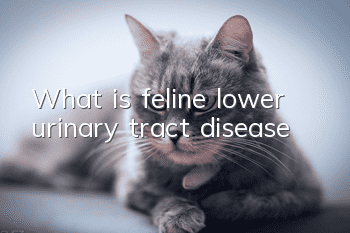If you get cat moss once, you will have cat moss for life.

Having cat moss once will not lead to lifelong cat moss. Cat moss is caused by fungal infection, which destroys the cat's skin structure and hair keratin, resulting in circular moss-like lesions, accompanied by hair loss, dandruff, and scabs. After suffering from scabs and other symptoms, cats can recover through drug treatment. As long as the environment is kept hygienic, as the cat’s resistance increases, it will not be easy for the cat to relapse.
Having cat moss once will not lead to lifelong cat moss. Cat moss is caused by fungal infection, which destroys the cat's skin structure and hair keratin, resulting in circular moss-like lesions, accompanied by hair loss, dandruff, and scabs. After cats have scabs and other symptoms, cats can recover through drug treatment after getting cat moss. As long as the environment is kept hygienic, as the cat’s resistance increases, cat moss will not be easy to relapse.
1. How is cat moss caused?
The fungi that cause cat moss are mainly three types of fungi - Microsporum canis, Microsporum gypseum and Trichophyton vitiligo. Most are caused by Microsporum canis. Feline moss is highly contagious and is a relatively common cat skin disease. Fungi are very tenacious in nature and have strong resistance to the environment. Even Microsporum canis can survive in dry environments for more than a year. Therefore, if a cat gets cat moss, the pathogenic fungi in its surrounding environment can survive tenaciously. Once the cat's resistance decreases, it may cause relapse in the healthy cat.
2. How to diagnose feline moss
The initial diagnosis is based on the observation of clinical symptoms of moss such as hair loss, dandruff, and scabs on the skin. Wood's lamp can be used to illuminate the skin in a dark environment. Irradiation. If a yellow-green fluorescence reaction appears in the irradiated area, it may be Microsporum canis infection. However, this method is not very accurate, but it can be used as an auxiliary examination method to help diagnosis. The diagnosis requires laboratory examination and scraping microscopy, observation of skin cell samples, and fungi can be observed through staining to confirm the diagnosis of catnip. The owner can go to the pet hospital for skin testing and then use drug treatment.
3. How to care for a cat with catnip
It should be noted that fungal infection can be transmitted to humans, so after the cat is diagnosed with catnip, the owner can wear gloves to treat the cat Apply medicine to the cat to reduce contact with the affected area. Wash hands and disinfect before and after contact with the cat. Pay attention to using the corresponding fungal disinfectant to treat the environment. At the same time, you need to pay careful attention to the hygiene of the cat’s living environment to prevent the cat from being infected with fungi. Cats with catnip should pay special attention to environmental disinfection and hygiene. Keeping the cat's hair clean and dry can effectively reduce the possibility of recurrence.
- Why does a cat keep drooling?
- Are there parasites in the cat’s bed?
- How to train a cat not to go to bed
- What causes cats to have oily tails?
- Rumor-busting: Are laser pointers a good pet toy? Improper use can harm cats and dogs.
- How to get a clingy cat? WOWO cat nutrition cream is the trick
- Can cats eat grapefruit meat? Why?
- Will Liushen toilet water be poisonous to cats?
- What is cat moss, how to treat and prevent it
- Precautions for raising domestic calico cats



